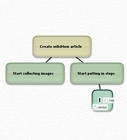How to Be a Good Drawing Teacher
Being a drawing teacher is such a wonderful job, but it can also be stressful if your students don't respond to you. There are, however, a few ways to not only get them to respond, but to make them excited to learn.
EditSteps
-
1Inspire your students. Try to remember when you were young and you started learning to draw. What inspired you? Was it the beauty of nature? Cute animals? Watching somebody else draw something amazing? Show your students drawings you have made. In the first few minutes of class, talk about your story and how they, too, can one day draw even better than you.Ad
-
2Make a lesson plan. If you're teaching very young children, plan what you're going to draw with them. If you're teaching older children or adults, plan what lessons you're going to learn and what techniques you're going to practice.
-
3Find ways to explain drawing techniques in simple, comprehensible language suited to the student's age and skills. Avoid using technical language, as this can alienate the students and lead them to think it's all a big chore. Instead, use simple and straightforward explanations that encourage the students to listen, mimic and learn.
-
4Encourage creativity. Stress that unless you're focusing on drawing for life, your students can be as creative as they want. Who are you to tell the 5 year old boy raccoons can't be purple? Just make sure you talk to each student about their choices. Instead of saying "Raccoons aren't purple," say "I really like your raccoon, he's very unique. Why did you make him purple?"
-
5Be fun. Your students want to draw dancing pizza? Well, don't forget the disco ball. Ask your students their favorite songs on the first day of class and make a playlist with them. Have a day where you make a craft. Bring snacks in on somebody's birthday. If your students think you're a good teacher, they'll look forward to your class.
-
6Make your drawing classroom the whole world. Don't just sit at a desk indoors. Go outside, go on excursions to the city, the park, the museum, the zoo. Have students bring lunch and cushion so that they can set up their drawing studio absolutely anywhere. What student doesn't love the chance to get out of the classroom?Ad
We could really use your help!
acupressure?

wedding dresses?

improving self-esteem?

fighting acne?

EditTips
- Use familiar objects from home, the classroom and outdoors as subjects to draw. If the students are familiar with the object and like it, it will inspire them to find their own personal perspectives of it and seek to put that down on paper.
EditWarnings
- Don't hurt anybody's feelings. Constructive criticism is important, but never say anything harsh.
EditThings You'll Need
- Drawing equipment
- Quality paper and scrap paper, notebooks
- Objects for inspiration















